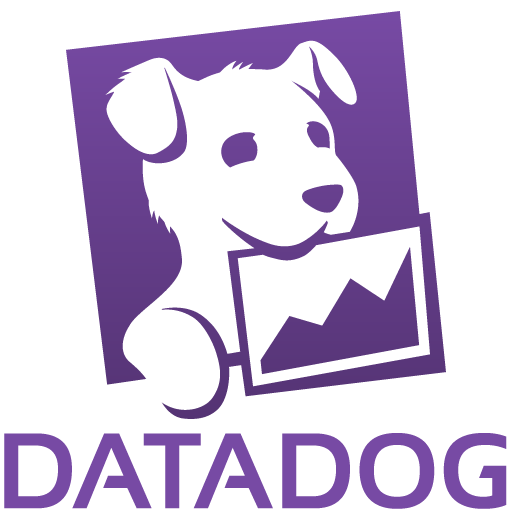The technology itself is generally very useful and the interface it great.

Datadog Enterprise
DatadogExternal reviews
External reviews are not included in the AWS star rating for the product.
Datadog - Blindspotfree observability
Reducing MTTD and MTTR
Application Engineer
All my data and security in one place
The Best Observability Tool for Cloud
Ease of APM setup.
Ease of custom dashboards and widgeting.
OpenTelemetry support.
AI for outlier detection, anomaly detection and correlation in a distributed microservices archtiecture.
Too many features sometimes overwhelm a casual user and distracts debugging.
Datadog is useful for reading logs
1. it provides a user-friendly interface to track down logs.
2. It allows to track and fetch logs according to specified time-frames.
3. Log appear live, so usage is useful to tracking down logs when on the spot.
4. Bug-tracking can be presented in a convenient way to help testers and developers during bug fixes.
1. User interface contains an overwhelming amount of features that make it difficult to navigate through.
2. Categorization is often innacurate and causes problems with finding specific logs.
3. Time-frame functionalities are often buggy and unreliable.
4. It's unclear how to integrates bugs from application in development to DataDog log system.
1. Is a solid platform to track down logs.
2. Helps tracking progress with bug discovery and bug fixes.
3. Helps with monitoring over database and server performances.
4. Allows to display live logs from current usage of application in development.
A product for everything
Datadog ASM has really helped protect our application in real time with the WAF
This stops security scans and other attacks right in their tracks.
Datadog an easy, visual way to monitor servers or containers
Great technology with a nice interface
What is most valuable?
What needs improvement?
There should be a clearer view of the expenses.
For how long have I used the solution?
I have used the solution for four years.
What do I think about the stability of the solution?
The solution is stable.
How are customer service and support?
I have not personally interacted with customer service. I am satisfied with tech support.
How would you rate customer service and support?
Neutral
Which solution did I use previously and why did I switch?
I am using ThousandEyes and Datadog. Datadog supports AI-driven data analysis, with some AI elements to analyze, like data processing tools and so on. AI helps in Datadog primarily for resolving application issues.
How was the initial setup?
It was not difficult to set up for me. There was no problem.
What was our ROI?
I can confirm there is a return on investment.
What's my experience with pricing, setup cost, and licensing?
I find the setup cost to be too expensive. The setup cost for Datadog is more than $100. I am evaluating the usage of this solution, however, it is too expensive.
What other advice do I have?
I would rate this solution eight out of ten.
Makes it easy to track down a malfunctioning service, diagnose the problem, and push a fix
What is our primary use case?
We use Datadog for monitoring and observing all of our systems, which range in complexity from lightweight, user-facing serverless lambda functions with millions of daily calls to huge, monolithic internal applications that are essential to our core operations. The value we derive from Datadog stems from its ability to handle and parse a massive volume of incoming data from many different sources and tie it together into a single, informative view of reliability and performance across our architecture.
How has it helped my organization?
Adopting Datadog has been fantastic for our observability strategy. Where previously we were grepping through gigabytes of plaintext logs, now we're able to quickly sort, filter, and search millions of log entries with ease. When an issue arises, Datadog makes it easy to track down the malfunctioning service, diagnose the problem, and push a fix.
Consequently, our team efficiency has skyrocketed. No longer does it take hours to find the root cause of an issue across multiple services. Shortened debugging time, in turn, leads to more time for impactful, user-facing work.
What is most valuable?
Our services have many moving parts, all of which need to talk to each other. The Service Map makes visualizing this complex architecture - and locating problems - an absolute breeze. When I reflect on the ways we used to track down issues, I can't imagine how we ever managed before Datadog.
Additionally, our architecture is written in several languages, and one area where Datadog particularly shines is in providing first-class support for a
multitude of programming languages. We haven't found a case yet where we
needed to roll out our own solution for communicating with our instance.
What needs improvement?
A tool as powerful as Datadog is, understandably, going to have a bit of a learning curve, especially for new team members who are unfamiliar with the bevy of features it offers. Bringing new team members up to speed on its abilities can be challenging and sometimes requires too much hand-holding. The documentation is adequate, but team members coming into a project could benefit from more guided, interactive tutorials, ideally leveraging real-world data. This would give them the confidence to navigate the tool and make the most of all it offers.
For how long have I used the solution?
The company was using it before I arrived; I'm unsure of how long before.